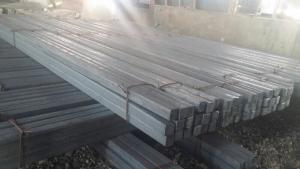Reinforce Bar: The Process of Strengthening Structures
Hey there! Let’s dive into the fascinating world of construction and engineering, where the art of making structures sturdy and reliable is a top priority. I’m talking about the process of reinforcing bars, or ‘rebars’ for short. These are the unsung heroes of the construction world, silently doing their job to ensure our buildings stand tall and strong against the test of time and nature’s forces.
The Backbone of Construction
Reinforcing bars, made primarily from steel, are the backbone of any construction project that aims to achieve strength and durability. They are embedded within concrete to create a composite material that can withstand a variety of stresses and strains. Imagine a superhero with a steel spine – that’s what rebars do for our buildings.
Why Rebars Matter
You might wonder why we can’t just rely on concrete alone. Well, concrete is great at compression, but it’s not so good at handling tension. Rebars step in to fill this gap, providing the tensile strength that concrete lacks. It’s a perfect partnership, really.
The Journey of a Rebar
Let’s follow the journey of a rebar from its birth in a steel mill to its final resting place in a structure. It starts as a raw material, molten steel, which is then formed into long, slender bars. These bars are tested for strength and ductility to ensure they meet the required standards.
Getting to the Core of the Matter
Once the rebars are ready, they are transported to construction sites where they are carefully placed within the concrete formwork. The positioning of rebars is crucial; they need to be in the right spot to provide optimal support. Workers use a combination of绑带绑扎 and 焊接 to secure the rebars in place.
Oops! It seems like I’ve used some terms that might not be in English. Let me clarify. ‘绑带绑扎’ refers to the process of tying rebars together with wire, and ‘焊接’ means welding. These are essential techniques to ensure the rebars work together as a unified structure.
The Art of Placement
The art of rebar placement is not just about putting them in the concrete. It’s about understanding the forces that will act on the structure and designing the rebar layout accordingly. Engineers and architects work closely to create detailed plans that dictate where and how the rebars should be placed.
When Things Go Wrong
Despite our best efforts, sometimes things don’t go as planned. Rebars can corrode, which weakens the structure they are meant to strengthen. To combat this, protective measures such as coatings or using corrosion-resistant materials are employed.
The Future of Reinforcement
As we look to the future, the process of reinforcing structures is evolving. New materials and techniques are being developed to make our buildings even stronger and more resilient. Who knows, maybe one day we’ll have rebars that can self-heal or adapt to changing conditions!
Wrapping Up
In conclusion, reinforcing bars are an essential part of our built environment. They are the silent guardians that give our structures the strength to stand against the forces of nature. The process of reinforcing is a complex and intricate one, requiring skill, knowledge, and attention to detail. So next time you walk by a construction site, take a moment to appreciate the hard work and dedication that goes into creating the foundations of our world.

